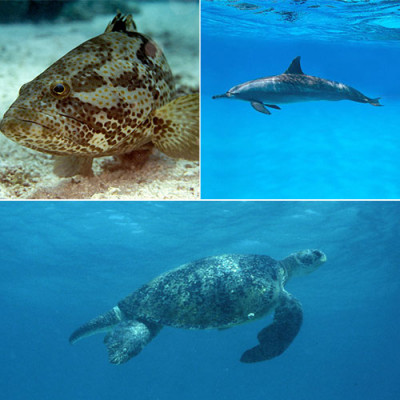Name: Narrowbanded Spanish Mackerel
Local name: Khanad
Scientific name: Scomberomorus commerson
Classification: Class: ray-finned fishes; Order: perch-likes; Family: mackerels (Scombridae)
Size: It commonly reaches 90 cm fork length, with a maximum of 220 cm.
Habitat:
It is neritic, mainly occurring along seaward reef slopes down to the greatest depths of the Arabian Gulf. It hunts as solitary individuals or in small schools, feeding on small fishes, squids and shrimps. Eggs and larvae are pelagic.
Distribution:
The species is widespread in the tropical and warm temperate Indo-West Pacific, from the Red Sea and eastern Africa in the west, to Fiji in the east, north to Japan, and south to Australia.
Conservation status:
The IUCN Red List of Threatened Species classifies the Narrowbanded Spanish Mackerel as Near Threatened (NT) in its global assessment and Vulnerable (VU) in the regional assessment for the Arabian Gulf. It is caught mainly by drift nets and trolling. It is the most common scombrid fish in local markets.
Description:
The body is fusiform and slightly compressed, with a very narrow caudal peduncle, reinforced by two small keels and a large median keel on each side. The caudal fin is lunate. The background color on the head and body is iridescent blue-grey dorsally, silvery ventrally, with numerous, narrow, irregular, dark bars ventrally and on the sides of the body.








